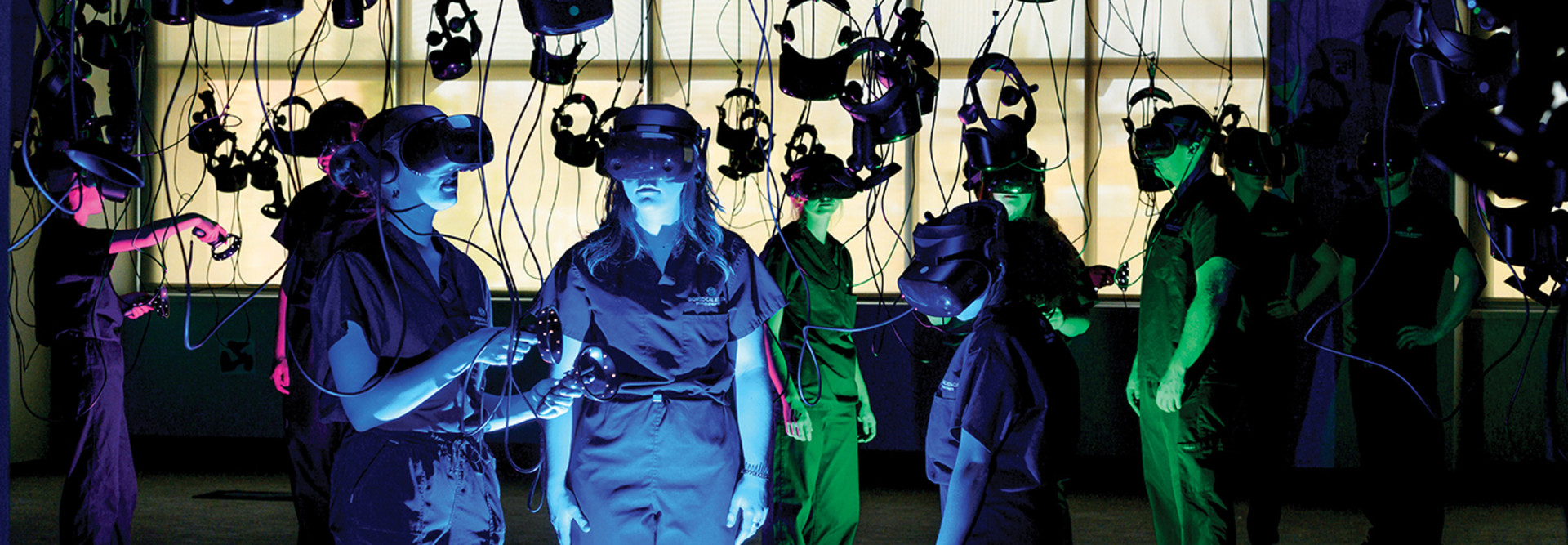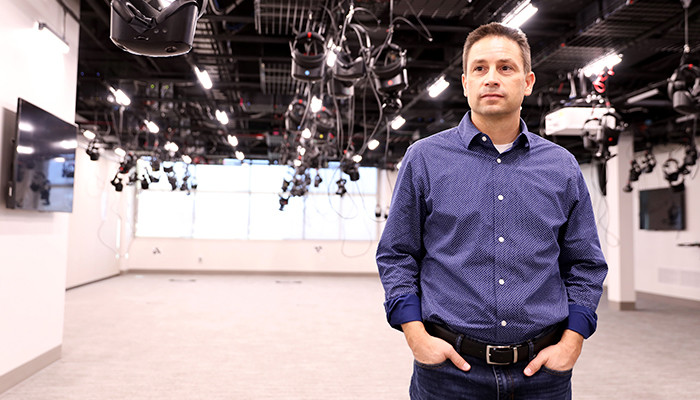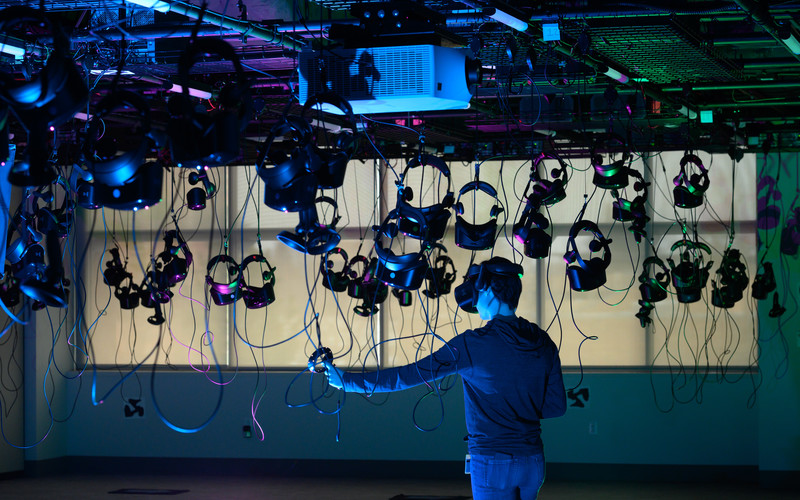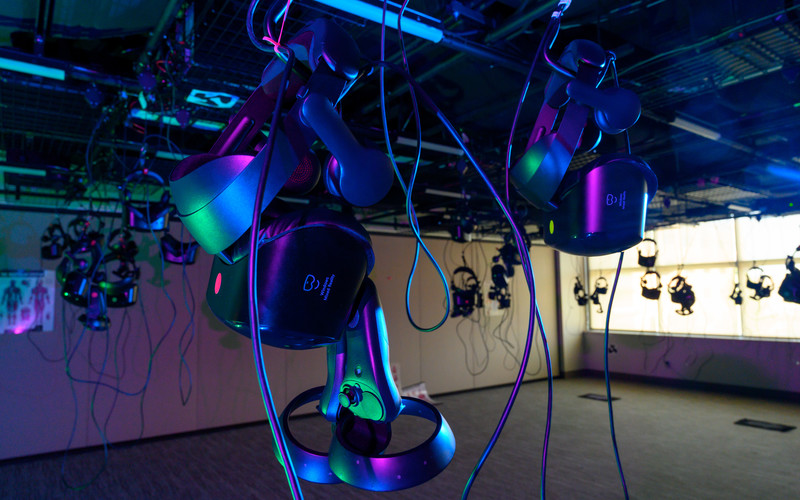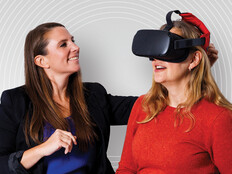At Penn State, professor Alexander Klippel and instructional designer Amy Kuntz collaborated to build an entry-level course that aims to prepare students for their mixed-reality futures. The course, Immersive Technologies: Transforming Society Through Digital Innovation, or GEOG 107N, is open to students of all majors at the university.
“There’s a universal need across the academic spectrum for understanding this technology and what it means for researchers to have this potential now available,” says Klippel. “We are able to teach people to create immersive experiences — immersive content — outside of a computer science department.”
Universities Align VR with Learning Objectives
Penn State boasts several VR-equipped spaces, including the IMEX Lab, where students use VR headsets in the Pinwheel Theater while safely seated in swivel chairs, and the Dreamery, where headsets are tethered to computer units.
The university’s VR inventory also includes headsets with inside-out tracking, in which the camera is placed on the headset rather than on a fixed point in the environment to provide greater mobility. That means users can also work with VR environments outside the lab setting.
In designing the GEOG 107N course, Kuntz was careful to define clear goals and objectives that would serve to guide instructors’ integration of mixed reality technologies.
“Good teaching is good teaching, whether you’re using technology or not,” she says. “When we’re integrating these leading-edge technologies, we make sure there is real alignment to the objectives, to the course content, to the learning activities and to the assessment of the students.”
Hoover agrees, seeing an incredible diversity ahead.
“I think there’s an application for almost every class,” says Hoover, citing use cases for mass communications and exploratory writing. “It definitely opens your eyes and enhances the learning experience.”
The Next Frontier for VR in Higher Ed
With universities just beginning to explore VR’s potential, Craig and Georgieva are excited to see what the future holds. While science and medical departments, in particular, have been early adopters, they are especially interested in use cases beyond those fields.
“We’re really going to see a profound impact when we start to integrate it into the humanities and social sciences,” says Craig. “There will be new ways to bring experience into the learning environment, and that’s a significant shift in the paradigm.”
When Digital Bodies first began presenting on VR at conferences in 2013, educators’ most common reaction was that the technology was compelling, but its application was way off in the future. Craig and Georgieva routinely countered that assumption, telling their colleagues that the future was coming faster than they thought.
Today, institutions like CSU, ULM and Penn State are proving them right.
“With XR, we’re learning how to collaborate and connect with others in ways that will fundamentally transform our human experience,” Georgieva says.



